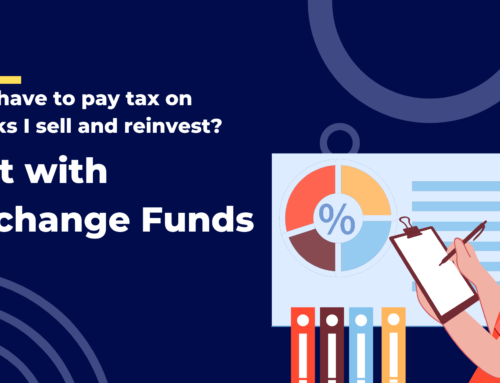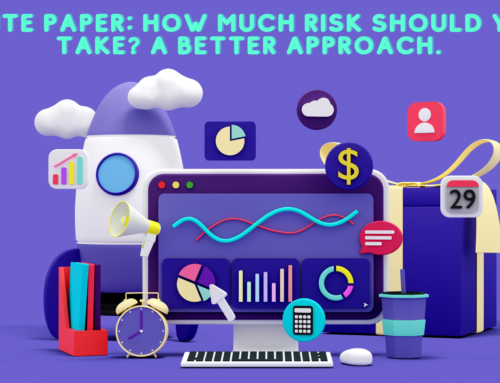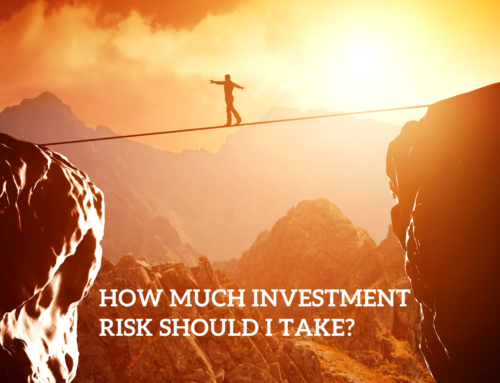Summary: Stocks rallied in the first half of 2023, led by growth stocks, especially tech stocks, especially AI stocks. While the US economy has performed better than was generally expected a year ago, rising interest rates have been leading to a rising tide of debt defaults and if this trend continues it may lead to recession. Stock market bullishness has been largely based on optimism that innovations in artificial intelligence will accelerate economic growth, but AI is probably overhyped at this point and is likely to soon run into diminishing returns. Growth stocks associated with technological innovation remain at all-time-high valuations normally associated with bubbles.
After a lousy 2022, stocks rebounded sharply in the first half of 2023, driven by growing optimism about a “soft landing” in the economy and excitement over recent advancements in artificial intelligence. But is this optimism justified? I have my doubts…
Cui Bueno?
The S&P 500 index of US stocks was up 16.89% in the first half of 2023, an incredibly strong start to the year (global stocks as measured by the MSCI ACWI index were up 14.26%). But by many measures the market this year has been very narrow, i.e. the positive returns have been disproportionately driven by a small handful of big winners. Who won in the first half? A familiar cast of characters. Below are the year-to-date returns of the S&P 500 as well as those of its 11 constituent sector indexes.
 Three sectors have dominated the charts this year; up top is technology, followed closely by communications and consumer discretionary. But the latter two were powered mostly by stocks formerly classified as tech: Alphabet and Meta for communications, and Tesla and Amazon for consumer discretionary. In other words, tech stocks – especially the famous FAANGS and their peers – have driven the rally in 2023, and everything else has been more or less treading water this year.
Three sectors have dominated the charts this year; up top is technology, followed closely by communications and consumer discretionary. But the latter two were powered mostly by stocks formerly classified as tech: Alphabet and Meta for communications, and Tesla and Amazon for consumer discretionary. In other words, tech stocks – especially the famous FAANGS and their peers – have driven the rally in 2023, and everything else has been more or less treading water this year.
We can see this most clearly by comparing the returns of the value and growth segments of the market. Below we see the returns on the largest value and growth ETFs in the US: Vanguard Value (VTV) and Vanguard Growth (VUG):
While growth stocks have shot up with a bolt this year, value stocks have barely budged, up just two and a half percent, a similar return as treasury bills. Amusingly, this chart is an almost exact mirror image of what we saw last year, as growth and value stocks were down 33% and 2%, respectively in 2022. Of course, due to compounding, if you go down by 33% and then back up by 33% you are not back to where you started but rather about 11% off your peak, so value is still beating growth since the start of 2022. But given that growth dominated value for most of the previous decade, the longer-term outperformance of growth over value over the last, say, ten years has once again been reestablished in 2023.
While the value-growth dimension and the stellar performance of tech has captured the popular imagination, another interesting lens through which to view recent market moves is the dimension of volatility or riskiness. Let’s look at how low-volatility versus high volatility stocks have done this year by comparing Invesco’s S&P 500 Low Volatility ETF and S&P 500 High Beta ETF (Beta is risk measure related to volatility that also incorporates correlation).
 Similar to value vs growth, defensive low-vol stocks are basically flat for the year, while speculative high-vol stocks are up big. The High Beta index contains a number of high-flying tech stocks like Tesla and Nvidia that overlap with growth, but it also includes a number of companies we wouldn’t think of as peers to the tech giants, like the cruise ship company Carnival, up 133% YTD, and Generac Holdings, a manufacturer of generators and lighting equipment, up 48% YTD.
Similar to value vs growth, defensive low-vol stocks are basically flat for the year, while speculative high-vol stocks are up big. The High Beta index contains a number of high-flying tech stocks like Tesla and Nvidia that overlap with growth, but it also includes a number of companies we wouldn’t think of as peers to the tech giants, like the cruise ship company Carnival, up 133% YTD, and Generac Holdings, a manufacturer of generators and lighting equipment, up 48% YTD.
What do these winners have in common with each other that the losers don’t? They generally represent a bet on improving macroeconomic conditions, and even accelerating economic growth due to AI. Let’s take these in pieces, starting with the current macro picture.
Mixed Macro Messages
Once inflation peaked last year and started decelerating on the heels of the Fed’s rapid interest rate hikes, the discussion turned to whether the Fed would have to induce a recession to tame inflation or if they would be able to manage a soft landing. The conventional wisdom was on the former: central banks have historically found it very difficult to fight off high inflation without causing a recession in the process, and 2022’s pace of interest rate hikes was unprecedented. The Fed would have to keep going until “something breaks” was the common refrain. But a year later inflation has cooled off significantly and the rest of the economy looks… not too bad, actually.
The official annual inflation rate in the US right now is 4.05%, down from its peak a year ago of 9.06%. But if we look at how much prices have increased in just the last three months it works out to an annualized inflation rate of just 2.1%, pretty much right on target. Meanwhile, the unemployment rate is still at a historically low 3.7%, wage growth has been robust, and labor force participation among prime-age workers has exceeded its pre-Covid peak and is now nearing all-time highs.
 US real GDP increased in the first quarter at a respectable rate of an annualized 2.0%, and the industrial production index, housing starts, and retail sales have all increased so far this year. The economy, in summary, seems to overall be doing pretty well compared to what most everybody was expecting a year ago. Investors seem to be extrapolating this benign environment forward and bidding up stock prices as a result.
US real GDP increased in the first quarter at a respectable rate of an annualized 2.0%, and the industrial production index, housing starts, and retail sales have all increased so far this year. The economy, in summary, seems to overall be doing pretty well compared to what most everybody was expecting a year ago. Investors seem to be extrapolating this benign environment forward and bidding up stock prices as a result.
Stocks are telling us that the economy is doing well and will continue to do so. What do other markets have to say?
Let’s start with commodities. In another example of a reversal from last year, commodities – the only major asset class that performed well last year – are down about 10% so far in 2023.
 This is a bit weird. Commodity prices are pretty closely related to expectations of economic growth, especially globally. And the two commodity sectors most related to production: energy products and industrial metals, are down the most. (Gold, on the other hand, which thrives on political and economic turmoil, is up about 6% for the year.) It can be possible for commodities to fall while economic growth rises if the growth is driven in part by increasing commodity supply (discovery of new energy/metal deposits, innovations in extraction technologies), but that doesn’t seem to be what’s going on here. In fact, commodity supply is still diminished by the war in Ukraine and related sanctions on Russia.
This is a bit weird. Commodity prices are pretty closely related to expectations of economic growth, especially globally. And the two commodity sectors most related to production: energy products and industrial metals, are down the most. (Gold, on the other hand, which thrives on political and economic turmoil, is up about 6% for the year.) It can be possible for commodities to fall while economic growth rises if the growth is driven in part by increasing commodity supply (discovery of new energy/metal deposits, innovations in extraction technologies), but that doesn’t seem to be what’s going on here. In fact, commodity supply is still diminished by the war in Ukraine and related sanctions on Russia.
So commodity markets seem to be disagreeing with equity markets on the near-term path of the economy. But commodity markets are smaller, more volatile, and subject to more idiosyncratic factors, so we shouldn’t necessarily buy their side of the story. But a much more heated debate is currently raging between equities and the much larger market for bonds.
There’s an indicator in the bond market that is widely followed by financial market participants – and has seeped more into the mainstream press in recent years – known as the yield curve, or the term structure of interest rates. Bonds, whether issued by the government, corporations, or other entities, come in a variety of maturities, ranging from 1 month or less to 30 years or more. Because the future path of interest rates is inherently uncertain, longer dated bonds are generally considered riskier and are more volatile. For that reason, they generally trade at higher yields than similar bonds with a shorter term in order to compensate for their greater uncertainty. But not always; sometimes the yield curve inverts, with longer dated bonds trading at lower yields than shorter ones.
Why would an investor buy a 10-year treasury bond at, say, 4%, when he could buy one maturing in 3 months instead if it was yielding 5%? Well, if he expects that interest rates will soon fall across the economy he might believe that when the higher yielding bond comes due in 3 months he won’t be able to buy a new one at an attractive rate, but by buying the 10-year he can lock in that 4% for a decade. Why would he think interest rates would fall? Probably because he believed the Fed will soon be easing monetary policy and lowering their key federal funds rate. Why would he think they would do that? Probably because he believes the economy will soon enter recession.
In the 1980s the economist Cam Harvey analyzed the yield curve and found that yield curve inversions seemed to always precede recessions. In the decades since that prediction has held up, and Harvey notes in a recent article that his yield curve indicator has “an eight-for-eight success rate in forecasting recessions since 1968 and no false signals.” Using Harvey’s preferred definition of the yield curve, the difference between the yield on 3-month and 10-year treasury bonds, here’s the history of what that’s looked like up until recently. US recessions are shaded in gray.
 A couple things to note here: first, Harvey is absolutely correct that of the 8 recessions we’ve seen since 1968, each has been preceded by the spread dropping below zero, although most observers would point out that the brief Covid-induced recession seems like a bit of a fluke, and Harvey conveniently leaves out the 1966 inversion which didn’t give way to a recession until 4 years later, prior to a separate inversion. But still, even 7 out of 9 is pretty darn good as far as macroeconomic indicators go. The second thing to note is that the yield curve is currently more deeply inverted than it’s ever been in modern history. Not surprisingly, in the above-linked article, Harvey predicts a deep recession in the US in the near term (and he has a pretty good track record on these things).
A couple things to note here: first, Harvey is absolutely correct that of the 8 recessions we’ve seen since 1968, each has been preceded by the spread dropping below zero, although most observers would point out that the brief Covid-induced recession seems like a bit of a fluke, and Harvey conveniently leaves out the 1966 inversion which didn’t give way to a recession until 4 years later, prior to a separate inversion. But still, even 7 out of 9 is pretty darn good as far as macroeconomic indicators go. The second thing to note is that the yield curve is currently more deeply inverted than it’s ever been in modern history. Not surprisingly, in the above-linked article, Harvey predicts a deep recession in the US in the near term (and he has a pretty good track record on these things).
Now, others have pointed out, and I have found in my own research, that when we use slightly more rigorous methods than eyeballing lines on graph, the yield curve indicator isn’t quite as powerful as this narrative would suggest. Recessions seem to happen anywhere from 3 to 18 months after a yield curve inversion, but when we do actual regression analysis of the current yield curve over future growth over a standard horizon like 1 quarter or 1 year, there’s hardly any relation at all. Still, the theory behind the yield curve is economically plausible, and when plausibly relevant macro-financial variables reach new all-time extremes, I take notice. So with the yield curve currently at an all-time low, are there plausible explanations for why we might have serious trouble in store for us?
Unfortunately, the answer is very much yes. As readers are no doubt aware, in March of this year Silicon Valley Bank and First Republic collapsed in what were the second and third largest bank failures in US history. These failures were well covered by the media and pointed to some of the idiosyncrasies of these banks, such as their poor risk management and poorly diversified client base, but the most fundamental source of their failure was the duration mismatch that arose as a result of the rapidly rising interest rate environment. Basically, after the interest rate shock of 2022 their asset values fell and their financing costs rose sufficiently fast that they found themselves no longer solvent. And while the rest of the banking sector writ large is well-capitalized enough that most economists do not foresee a contagion effect leading to financial crisis anytime soon, the transmission of this interest rate shock is now percolating throughout the economy in a way that may soon be highly deleterious.
The next shoe that appears to be dropping is commercial real estate. Commercial real estate is typically financed with lots of debt, and most of the outstanding stock of this debt was issued in a world where interest rates were close to zero. About $1.5 trillion of this debt is set to come due by 2025. As we’ve seen some of this debt come due this year many property owners have chosen to default rather than refinance at much higher rates that would be economically non-viable. Some of these defaults have come from very high-profile buildings that are now leading flagship properties to go on the market for fire-sale prices. Here in San Francisco, the owners of the city’s largest mall and largest hotel have both defaulted on their mortgages in the last month and the 22-story office building at 350 California Street just sold for about 75% less than the price it was listed for in 2020.
This is playing out in a different but still-troubling way in the residential real estate market. As mentioned above, housing starts remain relatively strong as there’s still pent-up demand, due in part because the US has failed to build enough houses to keep up with household formation for many years, but while new houses are still being built, sales of existing homes have plummeted. These two metrics, which are usually tightly correlated, have become completely uncoupled this year.
 Any of the tens of millions of Americans who bought or refinanced their homes when mortgage rates were at rock-bottom lows post-Covid or earlier in the 2010s can understand why this is. Most homeowners with a mortgage are paying a rate of something like 3% or even less. With rates on new mortgages now closer to 7%, many homeowners are now realizing that even if they want to move and buy a different home, they would not be able to afford to, as the financing costs of swapping for even a basically-identical home would make it prohibitively expensive. And so, they stay put. So long as this trend continues, it will reduce labor mobility and have an ossifying effect on local economies. In the meantime, it will likely put a ceiling on how much housing prices can rise.
Any of the tens of millions of Americans who bought or refinanced their homes when mortgage rates were at rock-bottom lows post-Covid or earlier in the 2010s can understand why this is. Most homeowners with a mortgage are paying a rate of something like 3% or even less. With rates on new mortgages now closer to 7%, many homeowners are now realizing that even if they want to move and buy a different home, they would not be able to afford to, as the financing costs of swapping for even a basically-identical home would make it prohibitively expensive. And so, they stay put. So long as this trend continues, it will reduce labor mobility and have an ossifying effect on local economies. In the meantime, it will likely put a ceiling on how much housing prices can rise.
As debts continue to roll over and reset to higher rates, interest expense is set to eat up a larger and larger slice of the economic pie. This will push more marginal enterprises into unprofitability and insolvency. In fact, we’ve already seen a sharp uptick in corporate bankruptcies this year, on pace for the most since 2010. As bankruptcies are a lagging indicator, and interest rates have only moved higher still, it’s hard to see this trend not continuing for a while, leading to more layoffs, defaults, and deleveraging, which will suppress demand and economic growth, possibly leading to recession. That the market has continued to rally in the face of a rising tide of debt defaults, including prominent bank failures, is a bit perplexing to me.
One way to deal with large amounts of debt is to grow your way out of them. If your economy is growing faster than the interest rate on your debt then interest expense as a fraction of your income will gradually shrink. Can AI rise to the challenge and power our economy to ever new heights? Maybe, but there’s reasons to think this latest hype cycle is just that, as well.
All Aboard the AI Hype Train
Since ChatGPT was released to the public late last year, I think about 70% of the conversations I’ve had with people have been about artificial intelligence. I have nerdy friends and your mileage may vary, but there’s no doubt that AI has captivated the popular imagination this year. ChatGPT quickly gained over 100 million users and became the fastest growing software application in history. ChatGPT, its peers in the generative AI space, and the question of where these technologies are taking us, have become the topic of thousands of newspaper and journal articles, podcasts, conferences, and of course, the best episode of South Park from last season. The most important fundamental economic – and indeed, existential – questions these technologies raise are the same ones our society has been wondering and worrying about for at least a hundred years when we first started thinking about robots and AI: once these machines become as intelligent as us, won’t they be able to do almost any economic task better than we can? And if so, what role does that leave for humans in society? Won’t machines become more powerful than us, and might they use that power against us?
These questions are more salient now because these systems seem at least as creative, intelligent, and just generally capable as humans across a variety of cognitive domains. ChatGPT has shown itself able to pass entrance exams to medical, law, and business school, and can talk to you about virtually any topic you want in a way that’s genuinely interesting and informative. It doesn’t seem that hard to imagine that if not in this current generation of systems, then within a few more iterations within a few more years we will have systems that can truly do anything you could hire a normal office worker to do. Indeed, it is OpenAI’s explicit goal (as well as apparently the other big AI labs) to make artificial general intelligence that is “generally smarter than humans” and can do essentially any cognitive task that a trained employee could, and to do that within something like a decade or so.
If this were achieved it could be truly transformational for the economy and society. Having general AIs that can do anything humans can would be equivalent to massively increasing the labor supply of the economy, and this could massively raise economic growth. Of course, huge swaths of the (human) labor force would now be out of work, however, so the gains would go primarily to the owners of capital in general, and the owners of these systems and their key inputs in particular (including suppliers of upstream technologies, raw materials, energy, land, etc.).
How plausible is this prospect that we’re right on the verge of a world-changing technological paradigm shift? Well, I can’t rule it out entirely. The argument is logically coherent, and there’s no reason to think it’s physically impossible. But I’m skeptical something like this will happen within a decade or so for a variety of reasons (I’m more open-minded on a 50+ year time horizon, but just generally think this is more likely to be a gradual process). I’ve written about the financial and economic impact of AI on this blog before, and I won’t give another comprehensive treatment here in an already-too-long article. This argument is unlikely to persuade AI True Believers, but I’ll lay out my basic objection that diminishing returns are a general feature of any technology, and then point to a few avenues in which I think this current generation of AI systems is already running into diminishing returns.
Those who argue that transformative AI is near rely heavily on the concept of positive feedback. These latest AI systems are already being widely adopted to help programmers write code faster, including code for new AIs. This brings the next generation of AI here even faster, and it can do more of the work itself without human input. Eventually, the AIs can work to improve themselves autonomously, bootstrapping themselves to greater and greater intelligence at an ever faster pace. Before long they are superintelligent and can do anything a human can a million times better/faster/cheaper. In my article Singularity or Stagnation? a couple years ago I examined this line of reasoning in detail and argued that essentially all forms of economic improvement involve elements of both positive and negative feedback, and that this has balanced out to smoothly super-exponential growth over the very long run, but there is little evidence of transformational paradigm shifts in the past, or presumably in the future. Crucially, the positive feedback argument applied above to AI could be made for any past technological breakthrough, but in fact you can’t really point to any past technology and see it having any effect on trend economic growth. Witness the last 700+ years of economic growth in the United Kingdom.

Source: Maddison Historical Statistics and Bank of England Research Datasets. Analysis by RHS Financial.
You can’t look at this graph of trend growth rates in the UK without looking at the dates and spot where the printing press, the steam engine, electrification, or the internet happened (although you can spot the Black Death and World War I and the British Pound’s ensuing loss of world reserve status). Even the industrial revolution, which is often described as a rapid takeoff in economic growth starting from nothing, looks here at its most dramatic as a gradual transition from growth just under 1% to just over 2% playing out over the course of a century, and perhaps isn’t even really a transition at all but the continuation of a process of very slow acceleration that’s been playing out since the dawn of humanity or even earlier (this is what I argue in my above-linked article). AI bulls often make the comparison of AI to previous “revolutions” like the industrial or agricultural revolutions to justify claims of rapid acceleration, but even these revolutions were not so revolutionary in the moment. So, given the fact that we basically don’t have any evidence of specific innovations causing substantial economic change on short time scales, we should consider the argument that this specific innovation will soon do just that to be an extraordinary claim and therefore demand extraordinary evidence, which I don’t see the AI bulls as having done just yet.
On the contrary, I see evidence that current AI systems are already running into limits on how much further they can go in the current paradigm. A recent article goes into detail on many of these here: Why Transformative Artificial Intelligence is Really, Really Hard to Achieve. I encourage you to read the article, but will briefly summarize what I think are some of the key challenges:
- We may already be running out of training data. Large language models like ChatGPT are trained by feeding them extremely large amounts of human-generated text. So large that they have now read an appreciable fraction of everything that humans have ever written, and what is left is probably of lower quality (Wikipedia > 4Chan). OpenAI CEO Sam Altman and other leaders have claimed they will be able to simply scale up the LLM paradigm until they reach general intelligence, but there may not be much scale left on this dimension, and it hasn’t been enough to give AIs a true model of causal reasoning.
- Scaling up the hardware much more might be prohibitively expensive and improvements in hardware efficiency are decelerating. Current AI systems use an incredible amount of computational resources – mostly expensive, cutting-edge GPUs – so much so that they’ve already become some of the dominant players in the GPU market. GPT-4 is about 3 orders of magnitude more powerful than GPT-3. But it’s estimated that just one more order of magnitude would require hundreds of billions of dollars more investment in compute, a high price to pay for even the largest tech giants. In the past Moore’s Law ensured that the efficiency of hardware would keep improving fast enough that you could just wait for the price of compute to come down to meet you, but Moore’s Law appears to be coming to an end. Current semiconductor technology has pushed right up to the edge of the atomic scale, and there are fundamental physical limits to how much further progress can be made. Improvements in price-performance in hardware appear to have leveled off in recent years and will continue to decelerate. Just last year even Nvidia CEO Jensen Huang declared, “Moore’s law is dead… The idea that the chip is going to go down in price is a story of the past.”
- Even if we automate most cognitive tasks, that may not be enough to cause a lasting increase in economic growth, and progress in robotics has been much more modest. Many of the most important sectors of the economy involve not just purely intellectual work but interaction with the physical world, such as agriculture, manufacturing, construction, transportation, and healthcare. Even if we automate all the jobs of the desk jockeys like programmers and lawyers and financial advisors that may just give us a one-time economic boost but then we’ll be back to the economy being constrained by the jobs we can’t automate (and I’ll have to learn how to become a plumber or something). Meanwhile, AIs that deal in the real world haven’t yet seen the sort of algorithmic breakthroughs the generative AI models have, and progress continues to be slow and erratic.
In relation to that last point, it’s worth reflecting on how things turned out during our last AI hype cycle with self-driving cars. Ten years ago, after some notable demonstrations of autonomous vehicle technology, we began to see a flurry of articles predicting that we’ll soon be living in a driverless future and the millions of Americans currently employed as drivers would soon be out of work. As early as 2014 Elon Musk predicted that within a few years a self-driving car could pick you up or drop you off anywhere in America. He’s been claiming this is two or three years away every year since. As of 2023 there are finally a small handful of cities in America, including San Francisco, where you can summon a driverless taxi and it will take you across town, as long as it’s within a certain specific area at a certain time, and everybody’s mad about them. It turned out that the first 98% or so of driving wasn’t too hard once we had good enough computers, but the last 2% of dealing with all the edge cases of driving in inclement weather, through construction zones, around other aggressive drivers, etc. is extremely difficult, requires tons of training, and we’re still not all the way there yet. Meanwhile, there are more professional drivers today in America than there were 10 years ago, and the Bureau of Labor Statistics is still forecasting that the profession will grow faster than average over the next ten years.
I think that most jobs in the economy are more like driving than like writing an essay based on a prompt; they involve complicated interaction with the physical world and/or complicated prediction of the behavior of multiple, often adversarial agents, both tasks AIs still struggle with. But, maybe I’m wrong (it’s happened before!). Like the rest of the world, I continue to keep a close eye on progress in AI and I’m sure I’ll return to the topic before long. In the meantime, I have a handful of macro-financial indicators I’m paying attention to to signal if and when AI starts taking over the world. Here they are and what they’ve been doing recently:
- Valuations on companies in AI and related technologies: These are now sky-high, as mentioned up top, pricing in rapid increases in profits in the near term.
- Prices on commodity and other raw material inputs to these technologies: As we saw, commodity prices have only fallen since the introduction of ChatGPT, and worthy of note is that prices on the metals that are commonly used in chips and related infrastructure are down especially this year. Similarly, stock prices of the companies that extract and produce the energy and raw materials that are the basic inputs to these technologies are also down this year.
- The yield curve: If AI technology accelerates economic growth then interest rates on long-term debt should rise far above that on short-term debt. As discussed above, not only is that not what we see right now, but the yield curve is the most inverted its ever been in modern history, pricing in a potentially steep recession.
- Growth in corporate profits relative to wages: Lots of people on the internet like to complain that corporate profits have been going up faster than wages recently. This is not true and I wish they would stop saying that.
 But if the AI-takes-our-jobs scenario does come to pass we will indeed see profits outpace wages. This is a lagging indicator, and it’s admittedly early days in this latest round of AI, but most recently it’s in fact been going the other direction. As of the last few readings we are currently already in a profits recession, while wages continue to grow at a solid clip.
But if the AI-takes-our-jobs scenario does come to pass we will indeed see profits outpace wages. This is a lagging indicator, and it’s admittedly early days in this latest round of AI, but most recently it’s in fact been going the other direction. As of the last few readings we are currently already in a profits recession, while wages continue to grow at a solid clip. - Unemployment and labor force participation: If AI starts taking all the jobs there will obviously be more unemployed people and fewer in the labor force. As we saw, unemployment is currently near all-time lows and labor force participation near all-time highs. Again, early days, but so far there’s little evidence of workers being laid off and replaced with ChatGPT. There are currently plenty of job openings looking for people with proficiency in using AI systems, however. The employment situation could of course deteriorate if we enter a recession as well, but in that case we would probably expect to see profits decline faster than wages.
So… one out of five for economic indicators pointing to transformational AI. Of course, investors getting excited about a new technology and bidding the prices of stocks related to it up way beyond any relation to fundamentals is a story as old as markets themselves. Which brings me to finally…
Growth Stocks (especially AI Stocks) are Super-Duper Crazy Expensive
With the rally this year growth stocks have achieved new all-time high valuations. Check out this comparison of the price-to-book ratio for the cheapest versus most expensive 30% of the market over time.

Source: Ken French Data Library Analysis by RHS Financial.
Growth stocks are now nearly 50% more expensive than they were at the top of the dot-com bubble. Mind you, value stocks aren’t exactly cheap compared to their history either, but they’re a bargain compared to the rest of the market.
Arguably, the relevance of price-to-book has declined over the years as intangible assets have grown to become a larger share of firms’ valuations, but things are only somewhat less extreme if we look at price-to-earnings or price-to-sales, somewhere in the vicinity of “tied with the dot-com bubble.” Several of the top tech firms in the market right now have price-to-earnings ratios above 100, including Nvidia, AMD, Amazon, and Salesforce. Prices like these mean these firms have to double or triple their earnings in short order just to deliver normal levels of return. Analysts are currently estimating Nvidia, the posterchild of the AI rally, will roughly quadruple its earnings per share by 2026. That is the expectation that is baked into the current price, Nvidia will have to meet that expectation just to be able to deliver normal levels of stock returns in the 6-10% range. If they “only” double their earnings over that time it could lead to a massive wipeout of share value. Suffice it to say, quadrupling earnings in three years when you’re already one of the largest players in the market and deploying capital on the scale of hundreds of billions of dollars is a stupendous feat that has almost never been attained.
Some of the other big names in the space like Apple, Microsoft, and Meta have P/Es “only” in the 30s or 40s, which seems quite modest and reasonable over the last few years, but falls near the 90th percentile of stock valuations over history, concentrated mostly around market peaks. These valuations might prove cheap in hindsight if we get transformative AI within the next decade, but “this time is different” are the four most dangerous words in finance.







